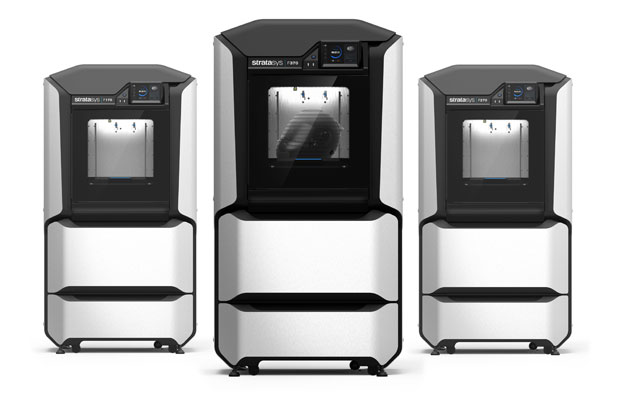Editor’s Pick: Engineering-Grade 3D Printing for Workgroups

The new Stratasys F123 Series of 3D printers reportedly provide workgroups professional-level, engineering-grade quality to address the rapid prototyping workflow from initial concept designs through design validation and final functional performance. Image courtesy of Stratasys Ltd.
Latest News
February 15, 2017
 Dear DE Reader:
Dear DE Reader:
 There are reasons galore why many product design and development teams have been slow to adopt rapid prototyping. Ease of use, speed, not very accurate parts and too few material options for the workflow are among the unmet requirements that come to mind. Today’s Editor’s Pick of the Week presents a new line of 3D printers designed to overcome such issues.
There are reasons galore why many product design and development teams have been slow to adopt rapid prototyping. Ease of use, speed, not very accurate parts and too few material options for the workflow are among the unmet requirements that come to mind. Today’s Editor’s Pick of the Week presents a new line of 3D printers designed to overcome such issues.
When Stratasys unveiled the three members of its new Stratasys F123 Series of 3D printers a few days ago, they described the systems as intended to make professional-level rapid prototyping more productive for design workgroups. How? Through a combination of ease of use, versatility and speed, accuracy and material options. Here’s what they meant.
Ease of use: These FDM (Fused Deposition Modeling) technology-based systems are office-friendly, meaning they’re quiet, plug-and-play and right-sized. They auto-calibrate and have front drawers for dropping in materials, which minimizes fussing with the hardware. You can run jobs over your network from your desk and monitor events with your portable devices. They support GrabCAD software, so you don’t need to be a 3D printing pro to import and convert CAD files or prep STL files.
Versatility and speed: These 3D printers will handle the complete prototyping workflow from printing out early concept designs to design validation and final functional performance. They have a fast draft mode for making initial design concepts quickly and without using a ton of materials.
Accuracy: Stratasys reports that Stratasys F123 Series printers have part accuracy within of +/- 0.008 in. or +/- 0.002 in./in. (0.002 mm/mm), whichever is greater. Layer thicknesses range from 0.013 in. to 0.005 in., depending upon the 3D printer and material you use. Build sizes for the three units are 10x10x10 in., 12x10x12 in. and 14x10x14 in.
Materials: You have four material options ranging from a thermoplastic suitable for concepts to production-grade ASA and engineering-grade PC-ABS. 10 colors too.
 Stratasys says its new F123 Series of 3D printers give workgroups professional-level, engineering-grade quality to handle the rapid prototyping workflow from initial concept designs through design validation and final functional performance. Image courtesy of Stratasys Ltd.
Stratasys says its new F123 Series of 3D printers give workgroups professional-level, engineering-grade quality to handle the rapid prototyping workflow from initial concept designs through design validation and final functional performance. Image courtesy of Stratasys Ltd.So can one of the new Stratasys F123 Series systems spur you to integrate rapid prototyping into your design workflow? They could. That’s your business. But you can start gathering data for an informed decision by reading today’s Editor’s Pick of the Week. Make sure to hit the link to go to the Stratasys F123 Series landing page. It has full details, documents to read and videos, as well as on-demand webinars to watch.
Thanks, Pal. – Lockwood
Anthony J. Lockwood
Editor at Large, DE
Subscribe to our FREE magazine, FREE email newsletters or both!
Latest News
About the Author
Anthony J. Lockwood is Digital Engineering’s founding editor. He is now retired. Contact him via [email protected].
Follow DE





